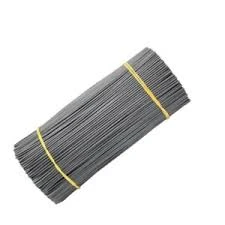High-Quality Nails for Hardwood Projects and Construction Needs
The Versatility of Hardwood Nails in Woodworking
When it comes to woodworking, the tools and materials we choose can significantly influence the durability and aesthetic appeal of our finished projects. One such essential component that often goes overlooked is the nail. Among the many types of nails available, hardwood nails stand out for their unique properties, making them indispensable in various woodworking applications.
Hardwood nails are specifically designed for use with dense hardwoods such as oak, maple, cherry, and walnut. These materials present unique challenges due to their dense fibers and resistance to splitting. Therefore, the right type of nail is crucial to ensure a solid and lasting union. Unlike standard nails, hardwood nails typically feature a thicker shank and a sharp point, allowing them to penetrate hardwoods with minimal effort and less chance of splitting the wood.
One of the most significant advantages of using hardwood nails is their strength. These nails are constructed to withstand greater force and load, making them ideal for structural applications. For example, when building furniture or cabinetry, the durability of hardwood nails ensures that joints remain tight over time, preventing sagging or failure under weight. This is particularly important in pieces like tables or shelves, where stability is vital.
Moreover, hardwood nails often come in galvanized or stainless steel varieties, which provide additional resistance to corrosion. This is essential in projects that may be exposed to moisture or humidity, such as outdoor furniture or kitchen cabinets. Using corrosion-resistant nails extends the life of the project, ensuring that it maintains its integrity and appearance for years to come.
hardwood nails

In addition to strength and durability, aesthetic considerations are also important in woodworking. Hardwood nails are often less visible than their counterparts, especially when finishing techniques such as countersinking and plugging are employed. This allows woodworkers to maintain the clean lines and natural beauty of the hardwood without unsightly nail heads detracting from the overall look. Some craftsmen even opt for decorative nails that add a unique flair to their projects, enhancing the visual appeal while ensuring functionality.
When using hardwood nails, proper techniques and tools are vital for achieving the best results. It is essential to use a hammer or nail gun equipped to handle hardwood nails to avoid damaging the material. Pre-drilling holes can also be beneficial, especially in very dense woods, as it reduces the risk of splitting and ensures a smoother finish.
In the realm of woodworking, the choice of nails affects not only the structural integrity of the project but also the overall finish and aesthetics. Hardwood nails provide a reliable and effective solution for joining dense materials, resulting in strong and visually appealing projects. They are perfect for both amateur woodworkers and seasoned professionals looking to create high-quality, durable pieces.
In conclusion, hardwood nails are a crucial component of successful woodworking. Their strength, durability, and aesthetic versatility make them an excellent choice for those working with dense hardwoods. Whether crafting a stunning piece of furniture or constructing elegant cabinetry, hardwood nails offer the reliability needed to produce long-lasting and beautiful works of art. As with any element of woodworking, understanding the proper application and techniques for hardwood nails will ultimately lead to superior craftsmanship and satisfaction in your woodworking endeavors.
-
Space-Saving Chain Fence Hacks Vertical Gardening with Cyclone MeshNewsJul.16,2025
-
Innovations in Iron Nail Wire Production for Modern ConstructionNewsJul.16,2025
-
Creative Uses of Wire Netting Fence in Modern Landscape DesignNewsJul.16,2025
-
Barbed Wire Fence Innovations in Anti-Climb TechnologyNewsJul.16,2025
-
Architectural Uses of Umbrella Nails for Aesthetic Roof DesignsNewsJul.16,2025
-
Architectural Uses of Razor Barbed Wire in Secure Urban DesignNewsJul.16,2025




